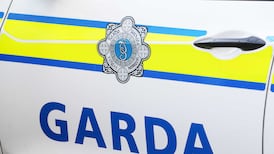A US radiologist has told the trial of a childminder accused of assaulting a baby that bleeding around the child’s brain does not point to a diagnosis of baby shaking.
Registered childminder Sandra Higgins (34) is alleged to have caused the injuries to the 10-month-old baby she was minding at her home.
Ms Higgins (34), of The Beeches, Drumgola Wood, Cavan, has pleaded not guilty at Dublin Circuit Criminal Court to intentionally or recklessly causing serious harm to the baby on March 28th, 2012.
Dr Julie Mack, who specialises in paediatric radiology, was giving evidence for the defence by video-link from the US. She said that the bleeding she identified on brain scans of the child was too small to represent the rupture of larger blood vessels associated with baby shaking.
She said that the bleeding did not indicate a massive rupture of a large vessel.
“These are the veins thought to be ruptured when you shake a baby and in this case there is simply not enough blood for a large vessel tear. It came from a smaller vessel,” the defence witness told the jury.
She said the bleeding on the membranes just above the brain could have been caused by bruising resulting from a bump on the head.
She told Remy Farrell SC, defending, that the scans show the possibility of a re-bleeding of an earlier injury or pre-existing problem.
Under cross examination, she told Seán Gillane SC that the standard view is that when you shake a baby large bridging veins break into the space between the skull and the brain.
“It is a standard view, most people believe and are taught that when you shake a baby the veins break into the subdural space. I absolutely disagree with it,” she said.
“I don’t believe that. The fixed view I have is based on anatomy and also on the forces generated with a shake. I disagree with the standard hypothesis.”
Dr Mack disagreed that she was an outlier in terms of the majority of medical experts and said that fewer people now held that view. Mr Gillane put it to her that her view was unshakeable regardless of the evidence.
She said that she had not read the medical report from Dr Alan Finan, the consultant paediatrician who treated the infant. She said she was unaware the child had bruising on both sides of her forehead.
Mr Gillane asked: “In terms of deciding whether a baby was assaulted or not, are you telling us it’s an irrelevance that the child had bruises on both sides of her head which you weren’t aware of?”
Dr Mack replied: “It doesn’t affect the way I can help the court. My job is to help the court understand the imaging.”
Mr Gillane said it would be wrong for a physician to rush to judgement and say an injury is accidental or historic without considering all the information.
“I did not say it was accidental, I said the evidence on the imaging is associated with impact. I cannot say if it was accidental or inflicted,” Dr Mack said.
The trial at Dublin Circuit Criminal Court continues before Judge Patricia Ryan and a jury of eight men and four women. There is a court order prohibiting publication of the child’s name.










